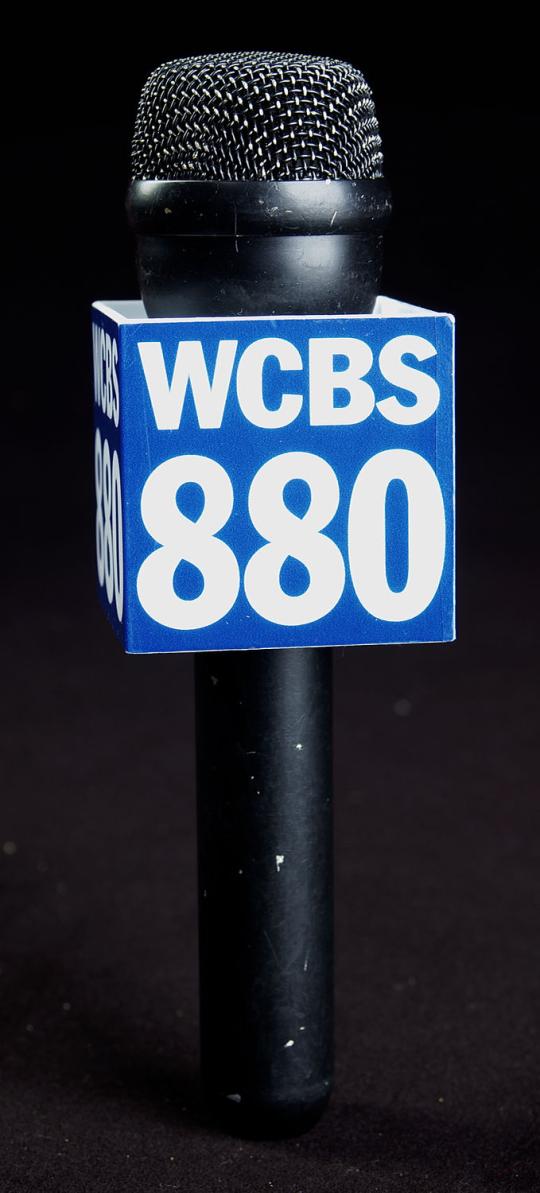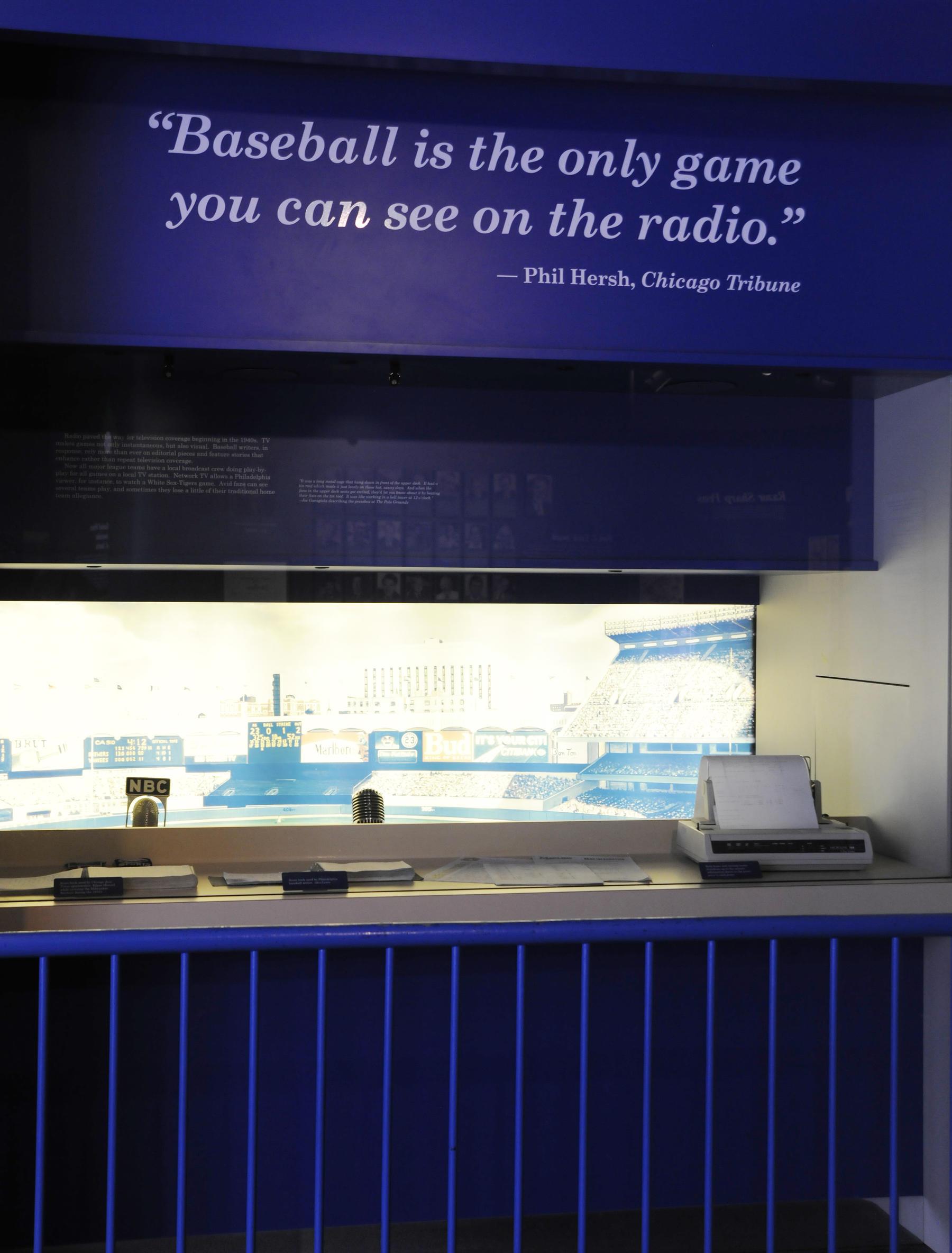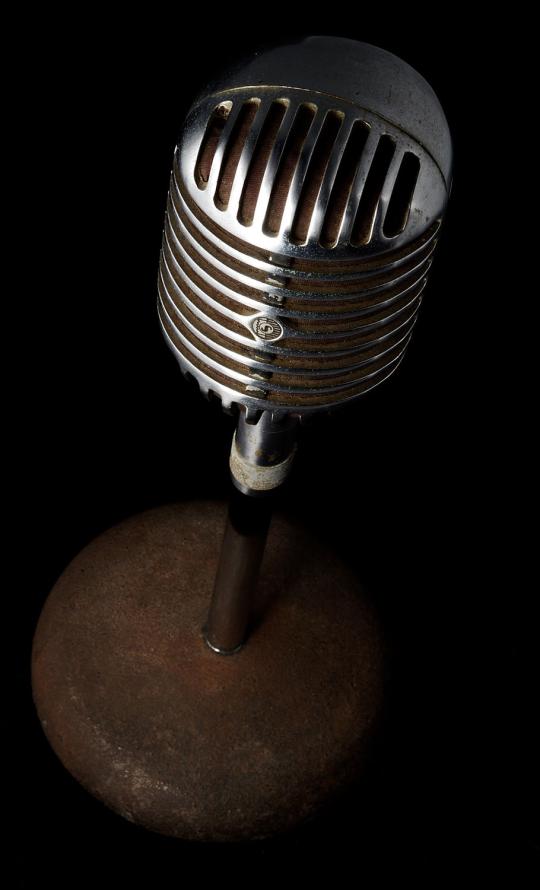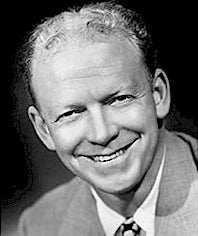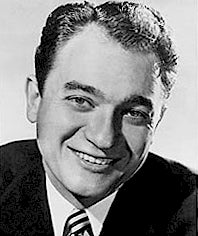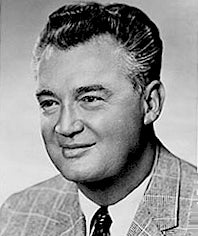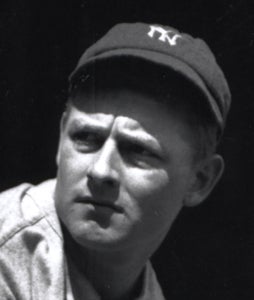- Home
- Our Stories
- Capturing the Story
Capturing the Story
Ballplayers may be the Boys of Summer, but broadcasters are the Voices.
We invite these masters of the microphone into our homes and cars, on our vacations, and even (shhh—don’t tell the boss) into our work areas. Spending hundreds of hours every summer in direct contact with millions of listeners, broadcasters create a personal bond with their audiences. Built up over time, these connections link us to the game and to our team. Is it any wonder we feel close to these mikemen?
At its core, an announcer’s job is to report what is happening on the field and at the plate, recount the score, and explain the circumstances of the moment. The best broadcasters, however, whether on radio or TV, make the game come alive in a special way. Through their own individual styles, they weave us into the game and bring us into the booth with them, where we can see the game through their eyes and enjoy their insights.
As an institution dedicated to the history of the game, the National Baseball Hall of Fame and Museum is committed to presenting all the facets of the National Pastime. To that end, the Museum would not be complete without the Hall’s Scribes and Mikemen exhibit, which annually enthralls thousands of Hall of Fame guests.
Baseball’s broadcasters, together with their written-media colleagues, bring the game to the fans in a dynamic way that complements seeing it on our own. In a good year, 40,000 people will pass through a team’s turnstiles for each home game. By comparison, ten times that many will watch or listen to a club’s radio and television networks every game, home or away. As historian Curt Smith notes, the broadcaster’s strength is bringing the game to the fans.
Because of this reach and influence, the Hall of Fame explores baseball broadcasters and broadcasting history in Scribes and Mikemen, an exhibit which opened in 1994. Here, artifacts and audio recordings illustrate a broad swath of broadcasting history, from the earliest pioneers to today.
The first thing most visitors note when approaching the exhibit is its audio montage. Recordings of 20 broadcasters from across time play in succession, identified by announcer, game, and date. These audio clips, drawn from the archives of the Hall of Fame, run a minute or so each. Rather than focusing on famed calls, the recordings are chosen from a variety of games, from the mundane to World Series contests, to give listeners a flavor of how the broadcasters usually sounded.
Entering the exhibit area itself, visitors will see artifacts presented in a pair of stylized press boxes, an early era one showing Philadelphia’s old Shibe Park and a newer one that overlooks old Yankee Stadium. Paralleling the layout in an actual press box, the upper level of each case contains the items related to the writing press, the “scribes,” and in the lower level shows the tools used by the broadcasters, the “mikemen.”
Harold Arlin, working from Pittsburgh’s venerable Forbes Field, called baseball’s first game on the radio on Aug. 5, 1921. The broadcaster’s tools have barely changed in the 90 years since: a microphone and a scorebook. Today’s announcers may use more colored pens than their predecessors did, but the basic formula remains constant. In light of that, the Hall displays examples of the microphones or other items from influential or well-known broadcasters.
For three decades, beginning in the mid-1920s, Ted Husing was one of the giants of sportscasting. Credited with being one of the first great play-by-play men, he was chosen by commissioner Kennesaw Mountain Landis to cover the World Series from 1929 to 1934. In that era, the commissioner picked the broadcaster, then told the networks whom he had chosen to work baseball’s biggest games. An opinionated and absolutely self-assured announcer, Husing was later banned by Landis from calling future World Series for criticizing the umpires in the 1934 Fall Classic.
That did not stop Husing, who continued broadcasting other sports for two more decades and helping to build the Columbia Broadcasting System into a national media powerhouse. In 1968, CBS donated Husing’s microphone to the Hall.
Near the microphone is a white cowboy hat belonging to Dizzy Dean. In stark contrast to the self-assured Husing, Ol’ Diz was folksy, personal, and approachable. He joined the radio broadcasting ranks in 1941 but made his mark on America as a television broadcaster, becoming as identified with his white Stetson as he was for his creative mangling of the English language.
When he started his television career in 1953, Dean and his “Game of the Week” were so popular that 75 percent of the televisions in use were tuned to him. That total, however, did not include those cities where Major League Baseball was played. Baseball’s leadership blacked out televised games within 50 miles of any big league park in order to protect the local markets, mirroring the ambivalent attitude the game had toward radio decades earlier. The ban lasted a decade, but it is a testament to Dean’s strength and popularity as an announcer that, even without the big cities, he became an icon of a golden era of baseball broadcasting.
After Dean died in 1974, his wife gave his signature Stetson to his longtime friend and producer, Gene Kirby, who later donated it to us in memory of one of baseball’s greats.
Brooklyn native Waite Hoyt pitched 21 seasons in his Hall of Fame career, collecting 237 wins and even more stories. It turned out that Hoyt could not only pitch great baseball, he pitched great stories, too. Legendary broadcaster Red Barber recognized Hoyt’s abilities and, shortly after the hurler’s retirement in 1938, brought him on as the Dodgers’ pre-and post-game analyst.
In 1942, Hoyt hooked on with Cincinnati as a Waite-of-all-trades, working solo for five years as he provided both the play-by-play and color analysis for the Reds. He was particularly famed for his rain delay stories, which were so popular that he released a pair of records of them when his quarter-century career behind the microphone ended. Hoyt’s mike is on exhibit; his albums are in the Hall’s archives.
There is one person most associated with baseball’s theme song, “Take Me Out to the Ball Game”: Harry Caray. With an out-sized personality and a voice to match, Caray captured fans wherever he worked. Beginning with the Cardinals in 1945 and interrupted only by a single season in Oakland, Caray’s “Holy Cow” reverberated across the Midwest and beyond for over a half century.
However, it was his move to the Chicago White Sox in 1971 that marked the beginning of an even greater fame. In 1976, White Sox owner Bill Veeck convinced (or coerced, depending on the version) Caray to sing, “Take Me Out to the Ball Game” on the public address system. It was a hit, and a tradition was born. In 1982, Caray brought the tradition with him when he moved uptown to Wrigley Field.
The image of Caray leaning out of the announcer’s booth with his shock of white hair, wearing trademark thick glasses and leading an entire stadium in song remains etched in the minds of millions of fans. Following his death in 1998, the Hall requested and received his iconic glasses, now in this exhibit.
These are only a few of the items on display in Scribes and Mikemen; on any given visit to the museum you might see additional items related to Ernie Harwell, Mel Allen, or Bob Elson, among others.
In the center of the exhibit area is a wall that features photos and biographies of all of the Ford C. Frick Award winners. This lifetime achievement award, named for the former broadcaster and commissioner, has been presented annually by the Hall of Fame since Mel Allen and Red Barber first received it in 1978. The opposite side of the Frick Award exhibit features photos and biographies of the J.G. Taylor Spink Award winners – an award presented to the best baseball scribes by the Baseball Writers’ Association of America.
The wall of awardees sometimes gives rise to the misnomer of a “broadcasters and writers wing” of the Hall. While the Frick and Spink award winners are not inducted into the Hall of Fame, there is no doubt that broadcasters and writers help bring to life the baseball experience that fans have cherished for more than a century.
John Odell is the curator of history and research at the Baseball Hall of Fame

